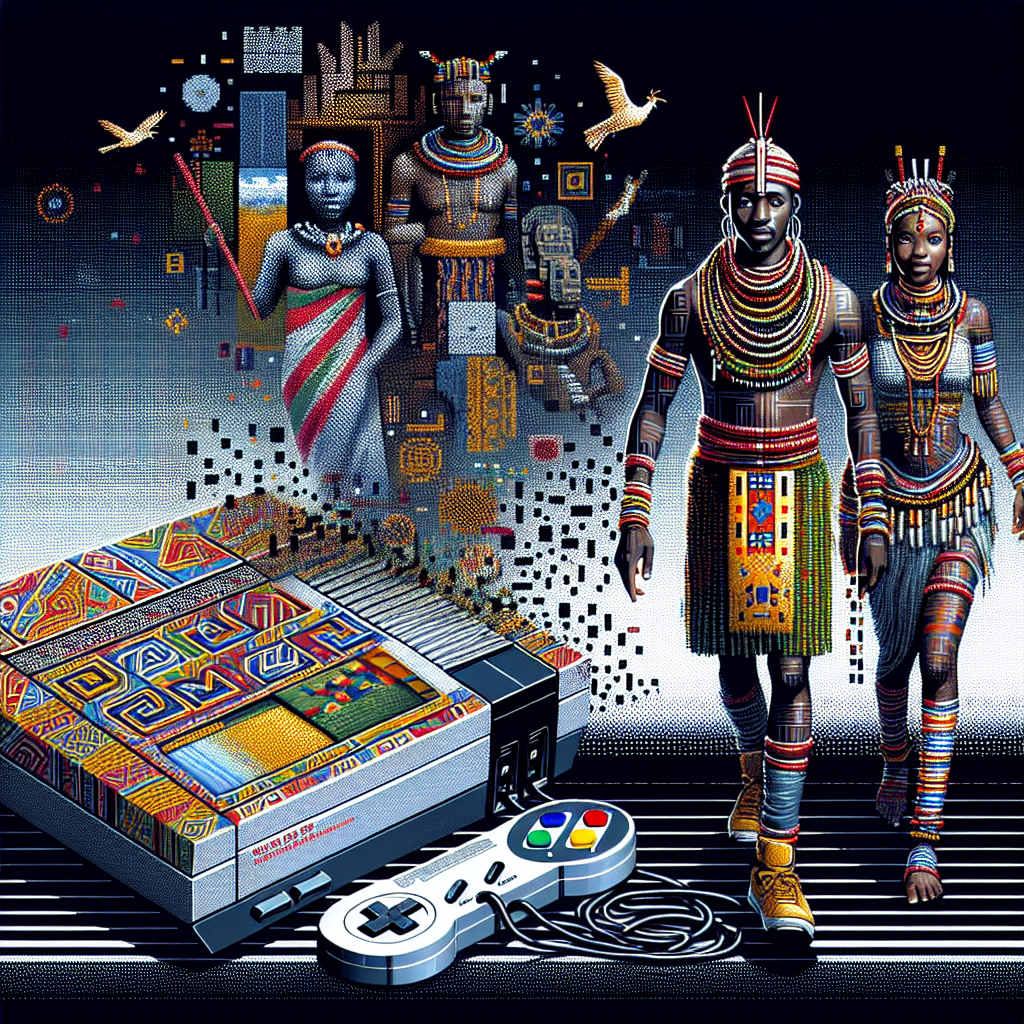Cultural Integration: Traditional African Art Forms in Video Games
As the world of video games continues to evolve, developers are increasingly recognizing the importance of cultural representation. One of the most fascinating aspects of this trend is the incorporation of traditional African art forms into gaming. This integration not only enhances the visual and narrative depth of games but also fosters a greater appreciation for Africa’s rich and diverse artistic heritage. As audiences become more globalized and culturally savvy, the fusion of traditional African art with game design presents a unique opportunity to share stories, stimulate dialogue, and inspire creativity.
The Rich Tapestry of African Art
Africa boasts a wealth of artistic traditions that vary dramatically across its regions, each with its unique styles, materials, themes, and meanings. From the intricate beadwork and textiles of the Maasai people in East Africa to the carved wooden masks of the Yoruba in West Africa, traditional African art often serves a purpose beyond mere aesthetics. It conveys spiritual beliefs, tells stories of ancestors, and celebrates communal values.
Game developers have begun to tap into this rich tapestry of art forms, using visual elements inspired by traditional crafts to create immersive experiences that resonate with players. Characters, environments, and narratives steeped in African culture echo the complexities and vibrancy of the continent’s diverse communities.
Case Studies: Games That Showcase African Art
Several video games stand out for their innovative use of African art forms. These games not only enrich their gameplay but also provide a platform for cultural storytelling and engagement.
1. Aurion: Legacy of the Kori-Odan
Developed by the Cameroonian studio Kiro’o Games, Aurion: Legacy of the Kori-Odan draws heavily from African mythology and art. The game is set in the fictional kingdom of Zama and features aesthetics inspired by various African cultures, including costumes, architecture, and character designs that reflect traditional African patterns and motifs. The narrative intertwines themes of leadership, identity, and cultural heritage, making it a poignant exploration of African values.
2. Aku’s Journey
Aku’s Journey, a platformer game developed by a group of African artists, utilizes vibrant colors and traditional art styles inspired by African textiles. The game focuses on a young boy’s quest to rescue his kidnapped sister, filled with cultural references, folklore, and symbols significant to various African communities. The hand-drawn art style imbues the game with authenticity, capturing the spirit and essence of traditional African storytelling.
3. The Forgotten Anne
Although not solely focused on African culture, The Forgotten Anne employs a blend of art styles within its narrative. Its resonant themes of identity and belonging highlight influences from various cultures, including African art forms. The game’s aesthetic, while rooted in animation, draws from the intricacy of African patterns and designs that enrich its world-building.
The Impact of Representation
Incorporating traditional African art forms into video games does more than beautify the game; it serves as a conduit for education and understanding. By highlighting the richness of African culture, these games challenge stereotypes and promote positive representations of African identities in a medium traditionally dominated by Western narratives.
Moreover, video games offer an interactive platform for players to engage with cultures that they might otherwise have limited exposure to. This engagement can foster empathy, curiosity, and a desire to learn more about the histories and experiences of different communities.
Challenges and Opportunities
Despite the growing recognition of African art in gaming, challenges remain. Issues of appropriation, oversimplification, and the commodification of culture can arise when developers approach these themes without sufficient understanding or respect. Collaboration with African artists and storytellers is essential to ensure authentic representation and to give voice to those whose stories are being told.
Furthermore, the rise of indie games has provided a platform for marginalized voices to shine. The gaming industry is witnessing an influx of creators from Africa, eager to share their narratives and artistic interpretations. This presents an opportunity for a new wave of games that could redefine the gaming landscape, incorporating more nuanced and diverse representations of African culture.
Conclusion
Recognizing and integrating traditional African art forms in video games is a significant step toward broader cultural representation and inclusion. As the gaming industry continues to expand its horizons, it holds the power to educate, inspire, and bridge cultural divides. By embracing the depths of African artistic heritage, game developers can create rich narratives and captivating experiences that resonate with players around the globe, celebrating the uniqueness and beauty of Africa’s diverse cultures. Ultimately, cultural integration in video games can pave the way for empathy, understanding, and a deeper appreciation of the world’s artistic narratives.




